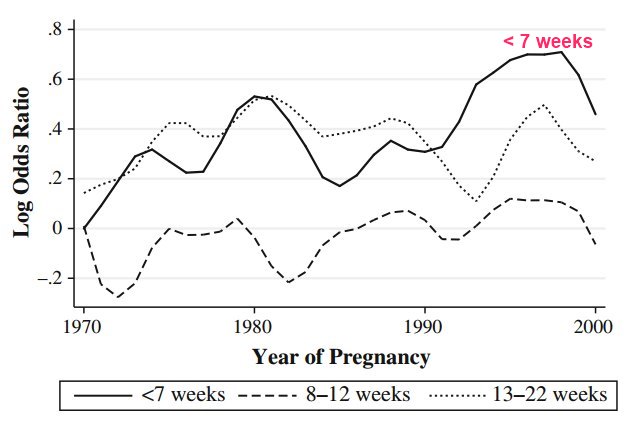Pregnancy loss 9X more likely if male had less than 20 ng of Vitamin D
Male vitamin D status and male factor infertility
Fertil Steril. 2021 Jul 18;S0015-0282(21)00535-5. doi: 10.1016/j.fertnstert.2021.06.035 $36 0aywall
Nicole Banks 1, Fangbai Sun 2, Stephen A Krawetz 3, R Matthew Coward 4, Puneet Masson 5, James F Smith 6, J C Trussell 7, Nanette Santoro 8, Heping Zhang 2, Anne Z Steiner 9
 * *📄 Download the PDF from VitaminDWiki* *
Speculation by VitaminDWiki: Might the increased miscarriage rate be associated with decreased Vitamin D levels?
---
Apparently: Pregnancy loss =miscarriage = spontaneous abortion (up to 20 weeks gestation)
1. VitaminDWiki pages containing PREGNANCY LOSS or MISCARRIAGE in title
{LIST()}
---
Why all companies should offer leave for pregnancy loss Fast Company July 2021
* "A 2020 study found that one in six women who have a miscarriage or an ectopic pregnancy suffer from long-term post-traumatic stress. When you consider that anywhere from 10-20% of known pregnancies end in miscarriage , that’s a lot of people who likely end up suffering privately at work, unable to take time off to recuperate."
* *📄 Download the PDF from VitaminDWiki* *
Speculation by VitaminDWiki: Might the increased miscarriage rate be associated with decreased Vitamin D levels?
---
Apparently: Pregnancy loss =miscarriage = spontaneous abortion (up to 20 weeks gestation)
1. VitaminDWiki pages containing PREGNANCY LOSS or MISCARRIAGE in title
{LIST()}
---
Why all companies should offer leave for pregnancy loss Fast Company July 2021
* "A 2020 study found that one in six women who have a miscarriage or an ectopic pregnancy suffer from long-term post-traumatic stress. When you consider that anywhere from 10-20% of known pregnancies end in miscarriage , that’s a lot of people who likely end up suffering privately at work, unable to take time off to recuperate."
Objective: To determine the association between vitamin D levels in the male partner and fertility outcomes in couples with mild male factor infertility.
Design: Secondary analysis of a randomized, controlled trial.
Setting: Nine fertility centers in the United States.
Patient(s): Men (n = 154) with sperm concentration between 5 and 15 million/mL, motility ≤40%, or normal morphology ≤4% were eligible. Female partners were ovulatory, ≤40 years old, and had documented tubal patency.
Intervention(s): Men provided semen and blood at baseline for semen analysis and 25-hydroxyvitamin D (25(OH)D) levels. They were randomly assigned to receive a vitamin formulation including vitamin D 2,000 IU daily or placebo for up to 6 months. Couples attempted to conceive naturally during the first 3 months and with clomiphene citrate with intrauterine insemination of the female partner in months 4 through 6.
Main outcome measure(s): Primary: sperm concentration, motility, morphology, and DNA fragmentation at baseline. Secondary: cumulative pregnancy, miscarriage, and live birth rates.
Result(s): Semen parameters and sperm DNA fragmentation were not statistically significantly different between men with vitamin D deficiency and men with 25(OH)D levels ≥20 ng/mL. In addition, clinical pregnancy and live birth rates were similar. Male 25(OH)D level <20 ng/mL was associated with a higher rate of pregnancy loss (adjusted odds ratio 9.0 ; 95% confidence interval 1.3 to 61.3).
Conclusion(s): Vitamin D deficiency in the male partner did not significantly impact semen parameters or treatment outcomes. Further study is warranted to better characterize the rate of miscarriage in couples with male vitamin D deficiency.
